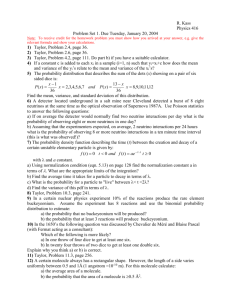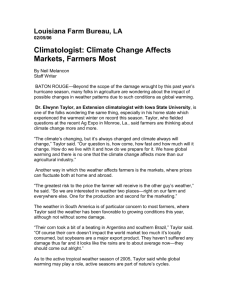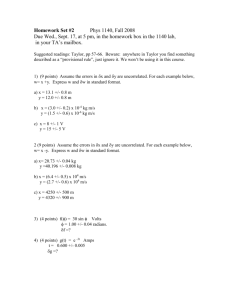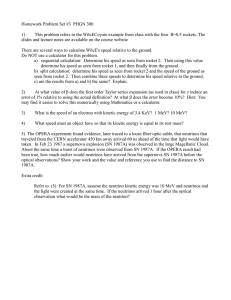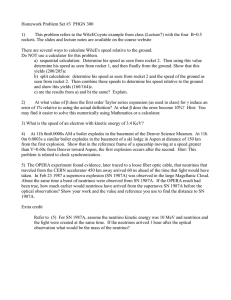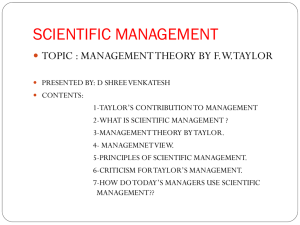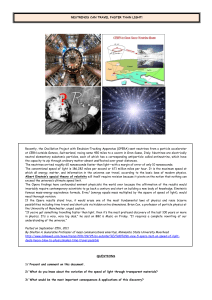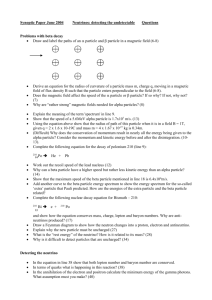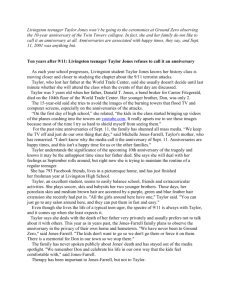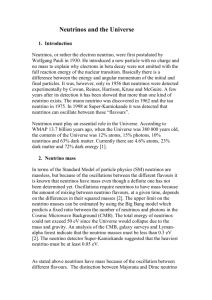homework 1
advertisement
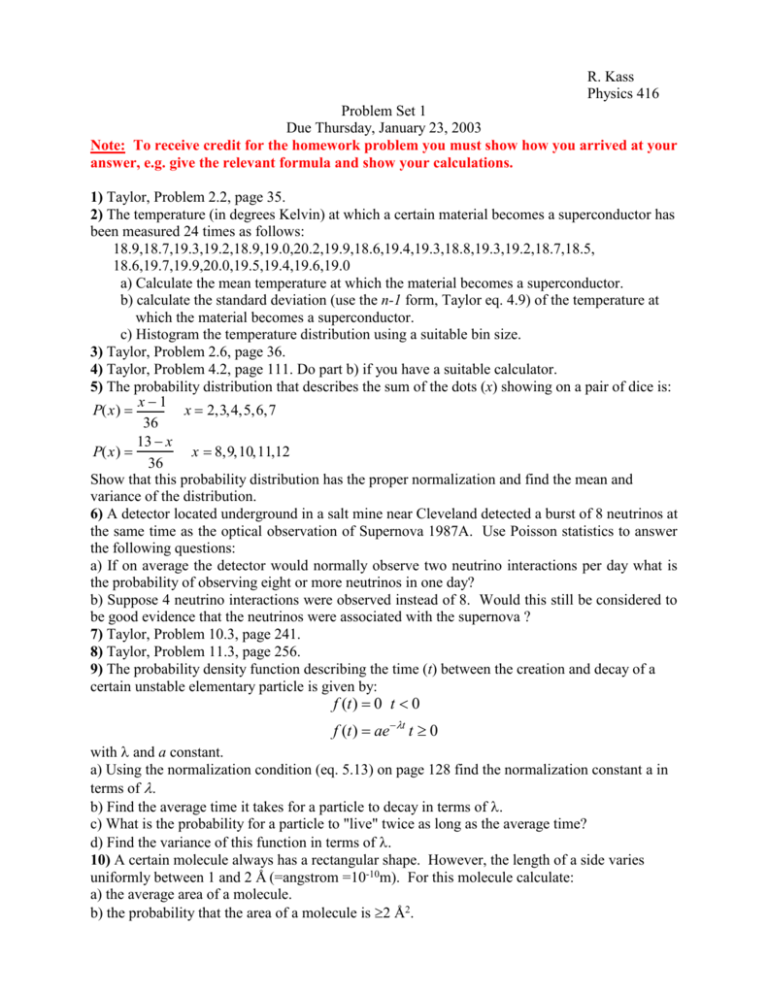
R. Kass Physics 416 Problem Set 1 Due Thursday, January 23, 2003 Note: To receive credit for the homework problem you must show how you arrived at your answer, e.g. give the relevant formula and show your calculations. 1) Taylor, Problem 2.2, page 35. 2) The temperature (in degrees Kelvin) at which a certain material becomes a superconductor has been measured 24 times as follows: 18.9,18.7,19.3,19.2,18.9,19.0,20.2,19.9,18.6,19.4,19.3,18.8,19.3,19.2,18.7,18.5, 18.6,19.7,19.9,20.0,19.5,19.4,19.6,19.0 a) Calculate the mean temperature at which the material becomes a superconductor. b) calculate the standard deviation (use the n-1 form, Taylor eq. 4.9) of the temperature at which the material becomes a superconductor. c) Histogram the temperature distribution using a suitable bin size. 3) Taylor, Problem 2.6, page 36. 4) Taylor, Problem 4.2, page 111. Do part b) if you have a suitable calculator. 5) The probability distribution that describes the sum of the dots (x) showing on a pair of dice is: x1 P(x) x 2,3,4,5,6,7 36 13 x P(x) x 8,9,10,11,12 36 Show that this probability distribution has the proper normalization and find the mean and variance of the distribution. 6) A detector located underground in a salt mine near Cleveland detected a burst of 8 neutrinos at the same time as the optical observation of Supernova 1987A. Use Poisson statistics to answer the following questions: a) If on average the detector would normally observe two neutrino interactions per day what is the probability of observing eight or more neutrinos in one day? b) Suppose 4 neutrino interactions were observed instead of 8. Would this still be considered to be good evidence that the neutrinos were associated with the supernova ? 7) Taylor, Problem 10.3, page 241. 8) Taylor, Problem 11.3, page 256. 9) The probability density function describing the time (t) between the creation and decay of a certain unstable elementary particle is given by: f (t ) 0 t 0 f (t ) ae t t 0 with and a constant. a) Using the normalization condition (eq. 5.13) on page 128 find the normalization constant a in terms of . b) Find the average time it takes for a particle to decay in terms of . c) What is the probability for a particle to "live" twice as long as the average time? d) Find the variance of this function in terms of . 10) A certain molecule always has a rectangular shape. However, the length of a side varies uniformly between 1 and 2 Å (=angstrom =10-10m). For this molecule calculate: a) the average area of a molecule. b) the probability that the area of a molecule is 2 Å2.
